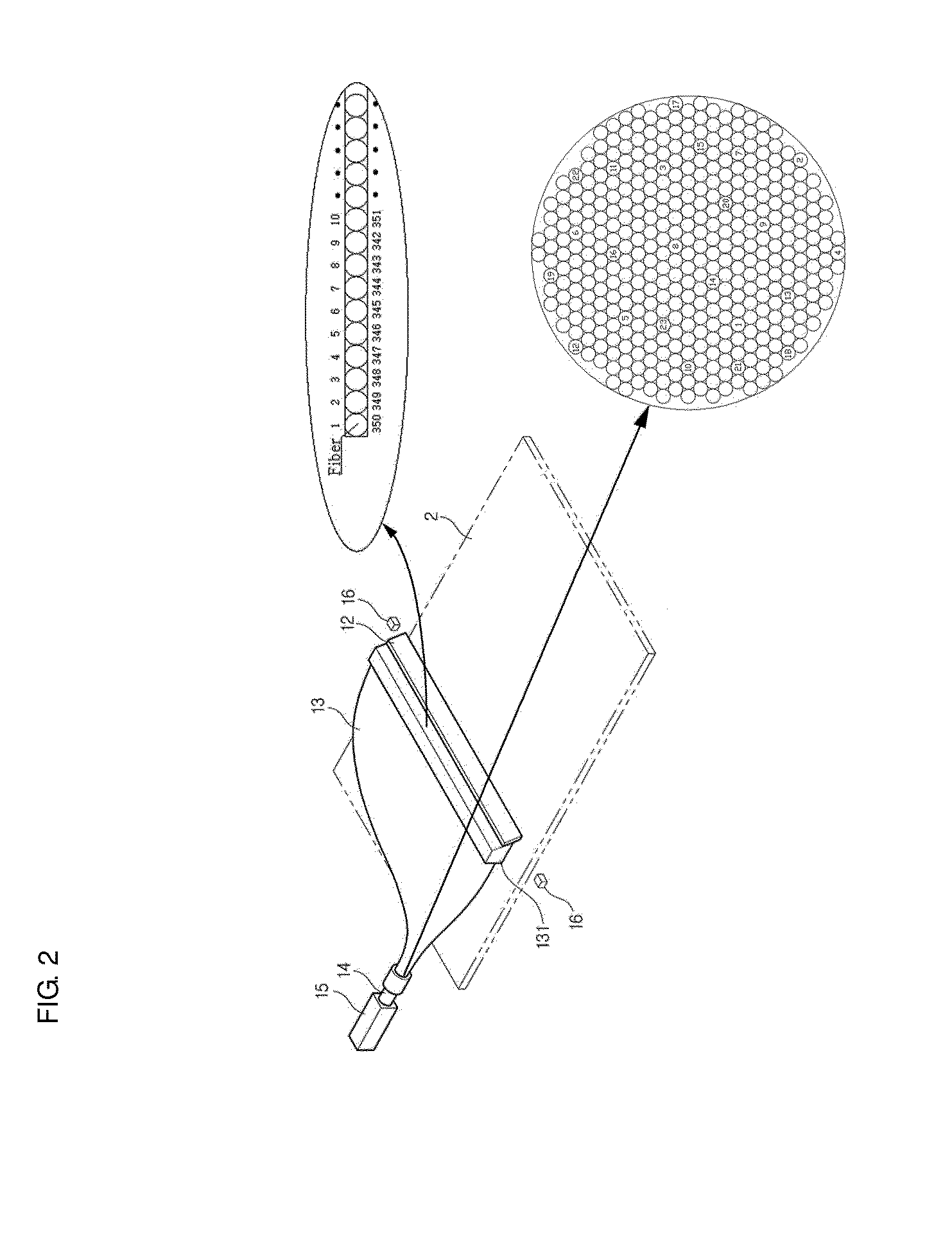Computed radiography (CR) system
a computed radiography and cassette technology, applied in the field of computed radiography (cr) systems, can solve the problems of limited clinical acceptance, dr systems are much more expensive than cr, and the replacement cost of a worn out or broken dr detector can be ten to one hundred times more expensive than a cr cassette replacement, so as to reduce “swank noise” and reduce depth-dependent optical gain. , the effect of uniform optical spectrum distribution
- Summary
- Abstract
- Description
- Claims
- Application Information
AI Technical Summary
Benefits of technology
Problems solved by technology
Method used
Image
Examples
experimental example
[0049]X-Ray Imaging Performance
[0050]In order to compare X-ray Imaging Performance of a computed radiography (CR) system according to an exemplary embodiment of the present invention with the same of the conventional CR system, Detective Quantum Efficiency (DQE) will be considered.
[0051]The DQE can be used to identify important factors to measure and to calculate their effect on the signal-to-noise performance of the CR system. We assume a scanning laser spot readout.
[0052]The DQE is a measure of the dose efficiency of the detector. It can be calculated using the equation:
DQE(f)=K2MTF2(f)MPS(f)Q
[0053]where f is the spatial frequency, K is the slope of the characteristic curve, and Q is the x-ray photon fluency incident on the light detector 15, and Noise power spectrum (NPS) characterizes the amount of noise and its texture, will be measured using standard techniques.
[0054]The shape of the NPS is important in determining the presence of secondary quantum noise. Secondary quantum noi...
PUM
 Login to View More
Login to View More Abstract
Description
Claims
Application Information
 Login to View More
Login to View More - R&D
- Intellectual Property
- Life Sciences
- Materials
- Tech Scout
- Unparalleled Data Quality
- Higher Quality Content
- 60% Fewer Hallucinations
Browse by: Latest US Patents, China's latest patents, Technical Efficacy Thesaurus, Application Domain, Technology Topic, Popular Technical Reports.
© 2025 PatSnap. All rights reserved.Legal|Privacy policy|Modern Slavery Act Transparency Statement|Sitemap|About US| Contact US: help@patsnap.com



